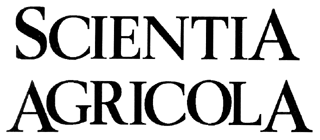The objective of this research was to determine the root potential regeneration (P.R.R.) and its effect on the field performance of Eucalyptus camaldulensis and E. urophylla seedlings grown in tubes and pressed blocks, with the following substrates: 1) sugarcane bagasse + filter cake (3:2; v:v) + 0.6% N (urea), and 2) decomposed eucalyptus bark + vermiculite (7:3; v:v). After cutting the lateral roots 2 cm away from the tap-root, the P.R.R. was evaluated measuring some characteristics of the regenerated roots such as: number, length, dry weight, area, volume, and growth rhythm. In the field, the survival was evaluated in the first two months, height growth and diameter at the soil level every other month, and number of primary lateral roots and deformations in 10 month-old plants. Compared to the seedlings grown in tubes, seedlings grown in pressed blocks showed higher values of the P.R.R., and a better growth in the field. In the nursery, decomposed eucalyptus bark + vermiculite was the best growing substrate. However, except for E. urophylla height, all other characteristics measured in the field, as well as for E. camaldulensis, did not differ among the studied substrata. The P.R.R. did not show linear correlation with seedling survival in the field, but it was positively correlated with height and diameter at the ground level, in the first months after planting.
Eucalyptus camaldulensis; E. urophylla
